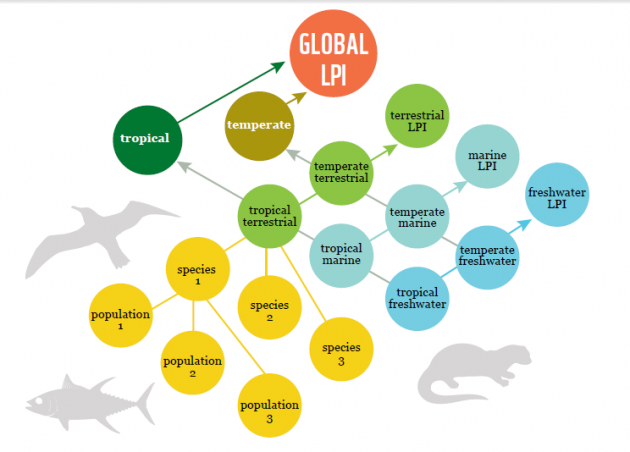
The Living Planet Report 2012 was released this past month by the World Wildlife Fund in collaboration with the Global Footprint Network and the Zoological Society of London. The report, published biennially, surveys the Earth’s health and the state of its natural resources. Results show that human consumption of resources has outpaced their supply at an ever-increasing rate since the 1970s. Currently, human resource use and waste production is happening 52 percent faster than the planet can sustain.
The following introduction is taken from the Global Footprint Network’s May 15, 2012 press release. The full report is available here.
Humanity’s Ecological Footprint—the global consumption of food, lumber, and textiles, and our release of carbon dioxide pollution—increased almost 2 percent from 2007 to 2008, the?most recent year that data were available. But with more than 83 percent of humanity living in countries where the residents’ demand on nature exceeds what the respective country’s ecosystems can renew, access to these resources will become a determining factor for each nation’s economic success. It is shaping countries’ ability to maintain their economic security, as well as the health and well?being of their population.
“We’ve entered the era of the global auction,” said Global Footprint Network President Dr. Mathis Wackernagel, “where nations are forced to compete fiercely for more expensive and less abundant resources. It’s in their own self?interest to preserve and restore the natural assets they have within their borders and avoid ecological deficit spending. In a resource?constrained world, such spending will become an ever?more challenging economic burden.”
News was widespread as the global economic crisis set in throughout 2008 and national governments saw their debts balloon. What was missing in the public discourse was that countries’ ecological deficits were rising at the same time?–?even faster. As a whole, humanity extracted resources more than 52 percent faster than they could be regenerated, eating into the planet’s existing stock of forests, fisheries, grasslands, and other assets. Meanwhile, prices for many of those assets nearly doubled to tripled in the last 10 years, according to World Bank data.
“We are living as if we have an extra planet at our disposal. We are using 50 percent more resources than the Earth can sustainably produce and unless we change course, that number will grow fast?–?by 2030 even two planets will not be enough,” Jim Leape, Director General of WWF International, said upon release of WWF’s Living Planet Report 2012.
Global Footprint Network data consistently shows that the world has been in ecological overshoot—when humanity uses more resources than the planet can replenish—since the 1970s.







